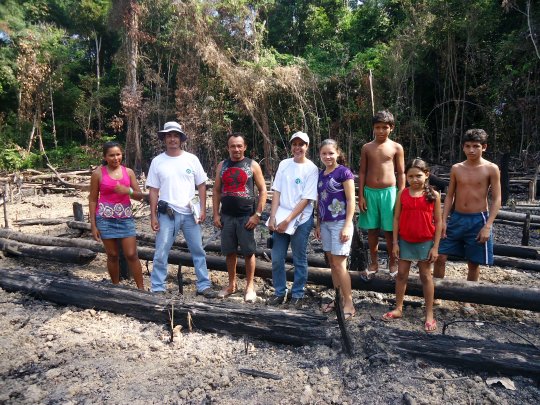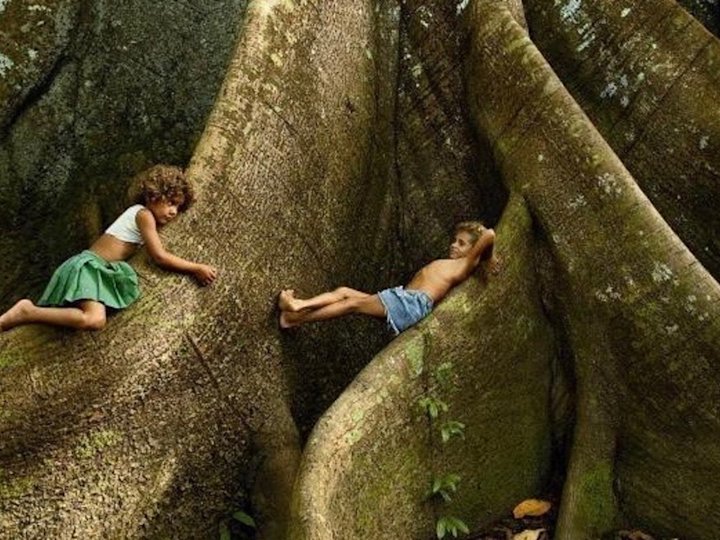In every transaction, our money – so that’s your money – is doing good. The resulting fees come together to make up the Tomorrow climate protection contribution, which flows directly to where it’s needed – to the future.
HOW DOES THAT WORK?
Every time you pay with your Tomorrow card, you make a contribution to climate protection. And this is how it works: For transactions with Mastercard, the business owner(that can be your organic supermarket or your favourite café) pays a so-called “interchange fee” to the bank from which the card originated. This is a globally established system – and an important source of income for all banks. As a customer, you don’t notice this process at all. We want to make a difference here – and use the fees for global climate protection projects. So we can work together, day by day, to make a contribution to a better tomorrow.
WHAT SORT OF PROJECTS ARE FUNDED, EXACTLY?
In the future, we will finance a number of different projects. At the start, the entire Tomorrow contribution is going to a forest conservation project in Portel, Brazil. We want to show you why the money here is particularly well spent here, and how, exactly, the Tomorrow contribution works. We’re making the project we support, and its steps towards success, completely transparent. In the Tomorrow app you can follow it live, and see what contribution your money’s making. Here we explain how we come up with the numbers.

LAND FOR SMALL FARMERS INSTEAD OF SOY PLANTATIONS
The project we support will save approximately 178,000 hectares of Amazon rainforest from illegal logging. The weak legal regulations regarding land use rights mean that these areas are particularly at risk. Areas of this area are considered to be very fertile and easily accessible, so industrial agro-enterprises are trying to exploit the areas for the cultivation of soya on a large scale. The threatened areas were originally inhabited and managed by indigenous peoples. They live there in simple conditions, and deforestation means they lose their already minimal source of income, since they live mostly from fishing or subsistence farming. In addition to the living and economic areas of the “Ribeirinhos”, as the Amazonians are called, deforestation also threatens many animal species. The species of Capuchin monkeys, Oncilla (Small Leopard) or Giant Otters will become extinct if the grubbing is continued on a large scale.
HOW EXACTLY DOES TOMORROW’S CONTRIBUTION HELP?
To counteract this development, the endangered area is divided into several plots by the forest protection project and closely monitored. In this way, it is protected from unwanted takeover by the agricultural industry and from illegal logging. The project means that the rainforest areas are protected, and the families living there and their habitats are safe. The population is actively involved in the process: the Ribeirinhos are trained in monitoring, so that, in addition to the protection of the forest, jobs are created.

Together with the inhabitants, the project managers develop local concepts for the sustainable agricultural use of the land. Currently, for example, some of the Ribeirinhos are trained to grow and distribute Black Pepper or Superfood Acai that affords them financial security. On the one hand, they are supported in gaining access to financial services and, on the other hand, they’re supported with the necessary know-how and equipment. In the future, this type of economic training will be expanded even more so that families can significantly improve their standard of living in the long term. In the future, the project plans to improve educational opportunities for the children and young people of Portel.
We work together with the organisation Climate Partner, who coordinate the project in Brazil and make the protection of the areas possible. By preserving rainforest areas from deforestation, the trees are conserved as C02 reservoirs protecting the climate. The Forest Conservation Project in the Brazilian rainforest thus actively contributes to achieving a total of four of the seventeen Sustainable Development Goals.
Whenever you use your credit card, you contribute to the support of this important project. Together we can make life more sustainable, social and ecological. Let’s get started!
////
WHY ARE WE DOING THIS? How exactly does the carbon offset work for you?
The subject of CO₂ compensation is currently much discussed. And that is a good thing, because of course it must not be considered as the indulgence trade of the 21. century.
In our case, the binding of CO₂ through the protection of trees in the rainforest is not directly related to a specific behaviour. Nevertheless, we want to present to you transparently how, why and in what context you as a Tomorrow user compensate for CO₂. Because this is an integral part of Tomorrow’s current account. It should be understood as a playful element that makes the connection between money and the current state of the planet visible. The contribution comes from our funds and is therefore not intended as an individual reward or punishment.
In principle, balancing climate-damaging consumption such as flights or cruises – ALWAYS has to be preceded by the attempt to avoid CO₂, in our opinion. This means that before a flight is made, everyone should ask themselves if this behaviour can be avoided. This view is also shared by the organization ClimatePartner, with whom we’re jointly implementing the climate protection contribution. With the principle of “Avoid, Reduce, Compensate” they make it clear that compensation for them is always the last step in the “carbon chain”. If compensation is still required, ClimatePartner offers a number of multi-certified projects. Among other things, the TÜV (quality testing bureau) Austria and PWC ensure by regular checks that the projects are flawless and the specified amount of CO₂ is genuinely saved.
